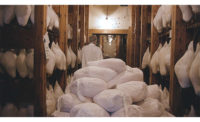New love for an old craft
Consumers are finally developing an appreciation for the art of butchery.
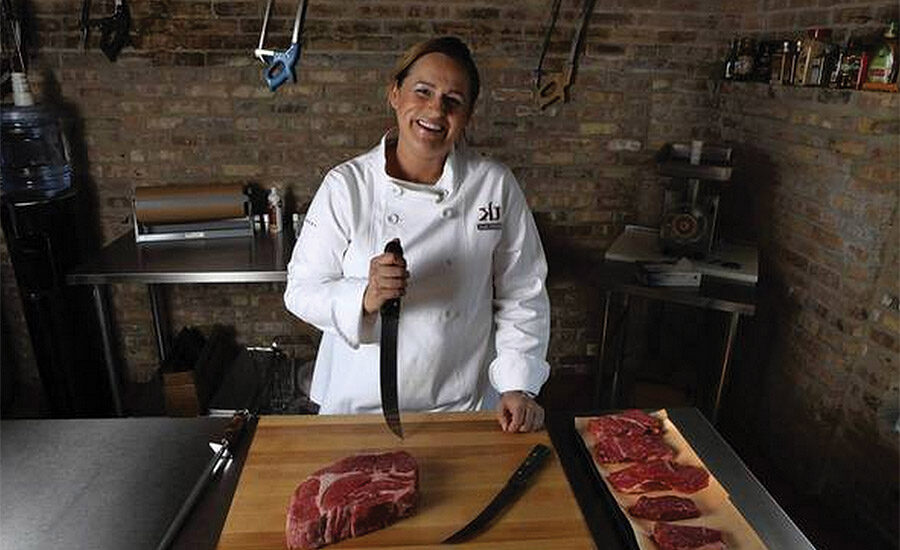
Butcher, author and instructor Kari Underly hopes to help teach the next generation of butchers with her Muscolo Meat Academy.
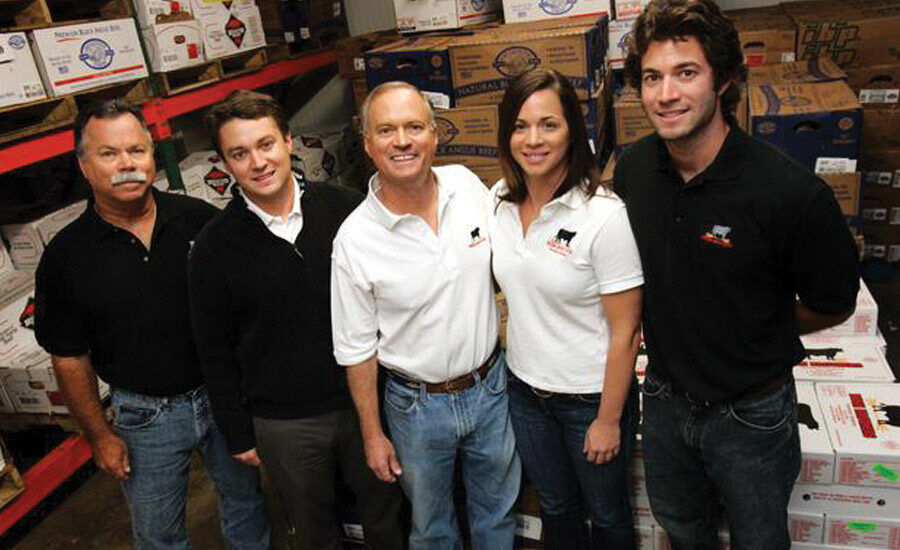
Doug Bush of Bush Bros. notes that along with passing the craft of butchery down to the next generations, more new students are interested in learning the craft.
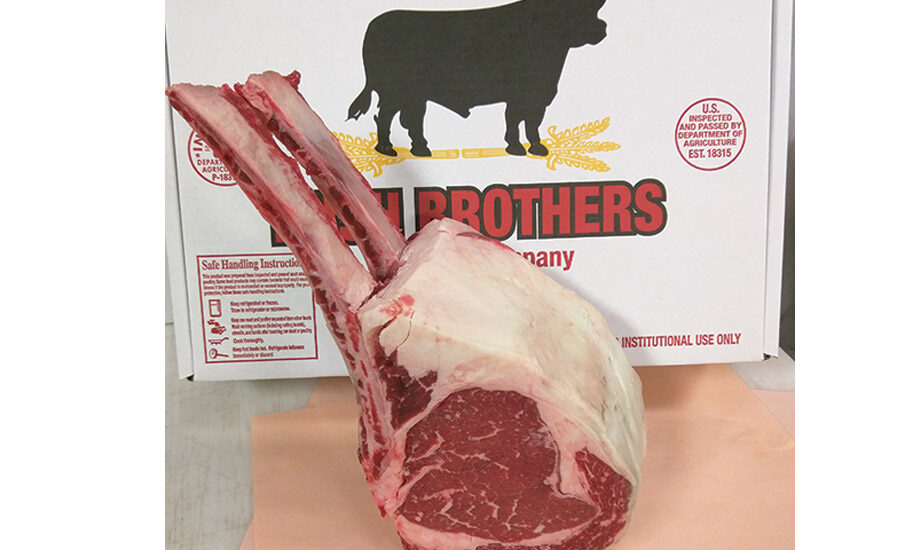
The Team at Bush Brothers provides custom butchery expertise to its high-end restaurant clientele.
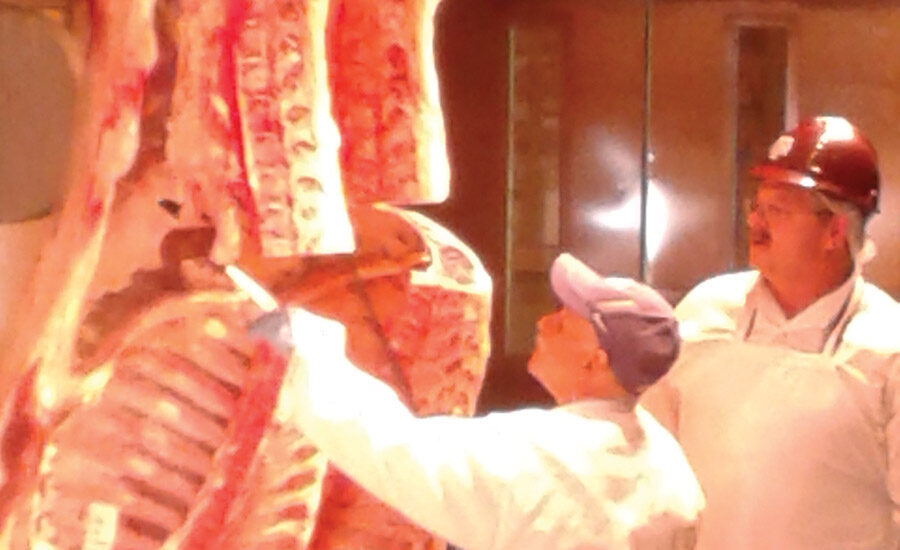
Steve Olsen (ballcap) was the developer of the first North American Meat Processor’s Meat Buyer’s Guide and serves as Standards and Specifications Advisor at the North American Meat Institute.
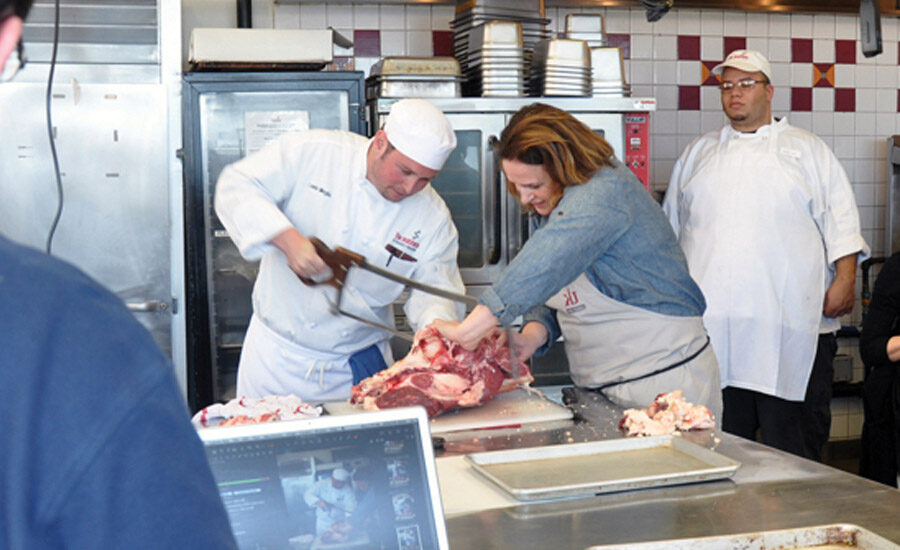
Kari Underly’s resume includes the development of the flat iron steak and Denver cut steak.
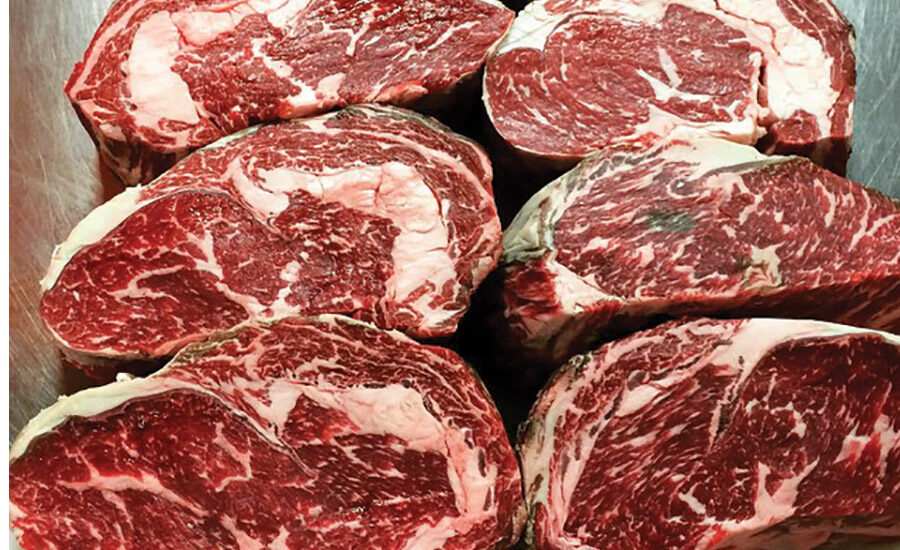
Thanks to a new appreciation for the art craft of meat cutting, today’s butchers are quickly becoming the rock stars of the industry.






There’s something mysterious about the craft of a meat cutter. Brute strength yet finesse with a knife, brought up with tradition yet fueled by innovation, rough-handed yet revered—butchers have risen to rock star status in today’s food culture. They are making the meat industry appealing, relatable, and downright sexy.
There has been a change in the way people look at food—a newfound appreciation for all things food and a culture of “foodies” interested in where their food comes from and how it gets there. Consumers are interested in joining the conversation and putting a face to the people who put food on their plates.
Today, the butcher has stepped up as the face for the meat industry. Because of this relationship, consumers are more excited to bring the meat cutting trade to their table.
“They are more than rock stars,” said Steve Olson, Standards and Specifications Advisor at the North American Meat Institute and developer of the first NAMP Meat Buyer’s Guide. “I think they aren’t recognized enough. They are the reason the meat industry is the way it is.”
Olson is a thought leader in the field of meat cutting. Having served 30 years as the Livestock and Meat Marketing Specialist at the Agricultural Marketing Service and as the developer of the first North American Meat Processor’s Meat Buyer’s Guide, Olson’s first-hand knowledge of the evolution of the trade is unprecedented.
Meat cutters today are setting into stride new trends and a refreshing excitement for the celebration of meat. People are appreciating the work and passion that goes into creating the perfect piece of meat, and we are beginning to celebrate that accomplishment.
“A lot of the movement that has been trending towards local and farm to table is now also looking towards artisan producers and Old World-style products. The gear has shifted,” said Doug Bush, fifth generation of Bush Brothers in West Palm Beach, Fla. “We are including artisan craftsmen in the same movement that previously wanted to know the farm. I can’t offer my customers the farm every time, but there are a lot of great craftsmen, and I can offer that.”
Chefs work closely with butchers to deliver products to their customers. They see firsthand the new-found appreciation for the craft of butchery, and they celebrate that. Recently, chefs have been featuring the names of butchers on menus. Now it is a celebration of the families who perfected the art of meat cutting and passed it down for generations. Chefs are proud of the artisans with whom they have relationships and are even more proud to serve their meat.
“People are fascinated with where their food comes from and who helps get it to our table,” said Chef Mike Erickson, producer of the documentary film True Beef about teaching students the connection between farm and fork in culinary education. “Many people feel knowing the butcher who cuts and fabricates your meat makes it more personal and allows them to know more about how the animal was raised and cared for.”
For the meat cutter, this movement is an ode to their passion, craft, and tradition. Kari Underly, who is the author of The Art of Butchery and founder of Muscolo Meat Academy, is a meat cutter by trade thanks to inspiration from her family. As many people who enter into the meat industry, her passion came from her family’s long time tradition of meat cutting.
“This new found respect gave me such calm and happiness in my spirit,” Underly said. “Elevating respect for the butcher is really exciting.”
Consumers are beginning to understand the innovation and craft that goes into producing quality meat cuts. As true innovators in the industry, butchers have always worked to bring quality cuts to the counter.
“We always felt the stress and pressure of coming up with something new. There was and is a high demand in delivering profits and quality, so we had to always produce the very best,” said Joe DiBenedetto, former Director of Meat and Seafood at Food Emporium and Gristedes. “That’s what drives the industry—coming up with something new and unique; the unique difference drives demand.”
DiBenedetto, alongside my father, Peter Strassburger, introduced the aged beef programs to grocery stores in the New York City area. This risky venture took off and opened up a whole new avenue for consumers to enjoy fine beef. Meat became a celebration you could bring home thanks to the craft of the meat cutter.
“We always wanted to do something different in the industry, and when we came out with the aging boxes it was so well received by the customers,” DiBenedetto said.
Innovation is at the core of butchery as an art. In today’s marketplace, the unique difference is a movement back to the butchery basics. Consumers appreciate knowing that their product is handled with care and with an expert’s hands.
“The introduction of new innovative cuts was what sparked this new found respect for butchery,” said Underly, who is known for having invented some of the cuts famous on steakhouse menus today like the flat iron steak and the Denver cut steak.
“Our relationships with customers exist because the customers we sell to are customers who know we are taking care of the product,” said Bush. “They want to call every morning and know that we take that order and are crafting a product to their specifications on a daily basis, by hand—even to the point that my chefs know which butchers cut their steaks.”
The meat industry is at a tipping point—a moment in time where consumers’ perceptions are pushing the industry to a new level of appreciation. However, at the same time, artisan butchers are a dying breed. The industry needs to jump on board and help to sustain this positive impression and this engagement through a two-pronged approach aimed at reaching the next generation of artisans. The industry must develop and support butcher training programs and relationships with consumers through social media.
In the past, meat cutting was passed down for generations—a true family business and craft. Although that lineage is still relevant and important for the industry today, more young people should be encouraged to learn about the craft through accessible outlets, such as butcher certification and training programs.
“It’s a family tradition, and just as meat companies in general are high levels of family business, the art of what we do is passed down through families as well,” said Bush. “But beyond that, we have found that our next avenue is finding students who are really interested in butchery and the craft that we produce.”
Underly, who learned from her grandparents, wanted to open the doors of her family business to teach young people just as her family taught her. This passion led to the Muscolo Meat Academy concept—a nine-month hands-on, intensive program that provides the ultimate in butchery career education based in Chicago.
Her partner, Megan O’Connor added that butchery is not just about the knife and meat but the entire business behind the art.
“[Muscolo] prepares students to manage all aspects of a successful butchery operation,” she said. “Students work directly with meat for 20-25 hours per week. Lab work is complemented by studies in anatomy, meat economics and merchandising, meat terminology, and meat careers. Every aspect of the program is designed to help students achieve the ultimate in butchery skills and expertise.”
A program like Underly and O’Connor’s academy will help to continue bringing the best in beef cutting to the marketplace. With well-rounded meat cutters who are truly experts in the field, this appreciation for food culture and the people who bring food from farm to fork will continue to grow.
Kevin Carrazzone from Creekstone Farms Premium Angus Beef and the New York Beef Council agrees that this movement towards extensive butcher training is beneficial to the industry and food culture as a whole.
“What you are seeing today is a different type of butcher,” Carrazzone said. “What you see is a more [well-]rounded butcher as far as being able to cook, prepare, and teach. It’s all added value. Years ago, a butcher would meet a guy who was a butcher and for three years be attached to him and show him how it all works. Today, there are many avenues of training.”
In addition to Muscolo Meat Academy, there are multiple other established programs focused on training the next generation of butchers.
Texas A&M offers a “Beef 101” course each year at the university through the Meat Science Department that breaks down the process of farm to fork and teaches breaking carcasses into cuts for market. This three-day intensive course invites members from all sectors of the meat industry worldwide.
Olds College located in Alberta, Canada hosts the National Meat Training Centre that focuses on butchery, animal welfare, and humane slaughter—the whole process from slaughter to retail in 15 weeks. This program truly shows how butchery today is not only an art and craft but a science.
The North American Meat Institute and the Beef Information Centre partner to bring the Centre of the Plate Training Plus, which is a three-day course that teaches the fundamentals of meat cutting and identification, focusing on bringing these cuts to the marketplace for retail and food service.
Although apprenticeships are still invaluable, programs like these help to introduce people into the meat business without a family lineage or connection.
“The art of meat cutting is amazing and will always be amazing,” Carrazzone said. “Nothing has been taken away from the craft, there is just a different training path. These programs take training to the next level. They learn how to cut, tenderize, learn the science behind meat, genetics, and merchandising. You talk about well-rounded; these [butchers] really get an education.”
Communication to these millennials—the next generation of meat cutters—has changed drastically. Dubbed the connected generation, millennials connect via social media outlets such as Facebook, Twitter, and Instagram, to get their news and information, ask questions, and find answers. Meat cutters need to be on social, joining the conversation, and letting millennials know that butchery is a respected and interesting career path.
“For the industry, social media is a great way to communicate,” said Underly. “This outlet helps the smaller butcher because now they have direct access with their customers. In the ‘60s when you had neighborhood butcher shops, you had to know people who knew somebody who could recommend a good butcher. Now, with a push of a button you can have that information. There is a direct connection.”
Many young butchers are rock stars on social media, featuring hanging carcass on Instagram, introducing new cuts on Twitter, and sharing their stories on Facebook. Millennials are getting excited about the industry and this craft because of their presence on social media.
“If you love meat, you should be inspiring the next generation of butchers,” said Chef Mike. And this inspiration can come from communicating passion through social media outlets.
All in all, the art of butchery must stay on its high pedestal. This craft should be celebrated. Respect for butchers is an important step in the movement towards an appreciation for all players in the process from farm to fork.
Looking for a reprint of this article?
From high-res PDFs to custom plaques, order your copy today!





